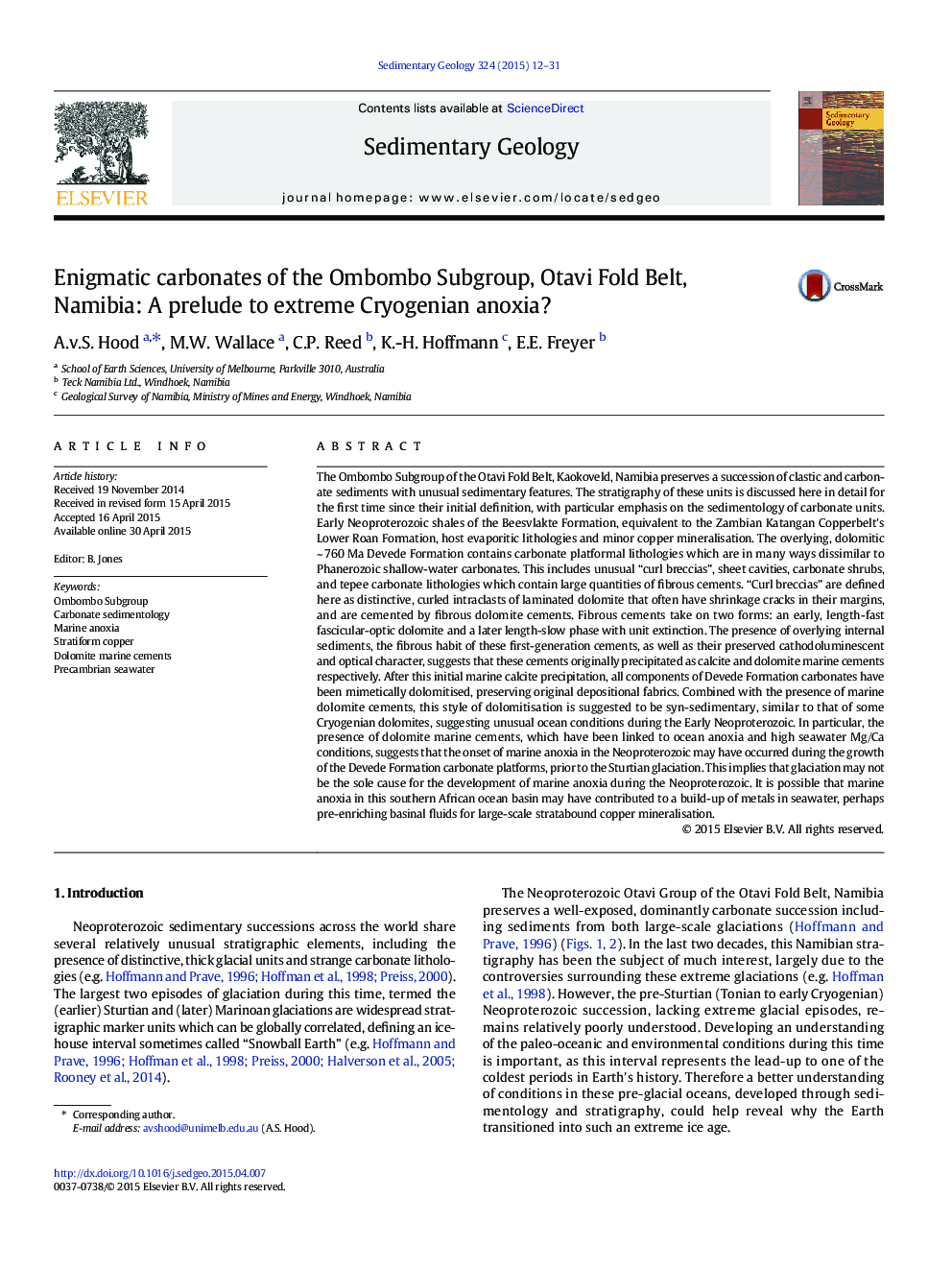| کد مقاله | کد نشریه | سال انتشار | مقاله انگلیسی | نسخه تمام متن |
|---|---|---|---|---|
| 4689250 | 1636039 | 2015 | 20 صفحه PDF | دانلود رایگان |

• The Ombombo Subgroup, Namibia contains unusual carbonates and copper mineralisation.
• The dolomitic Devede Fm. contains curl breccias, sheet cavities, and tepees.
• Syn-sedimentary dolomitisation suggests ocean anoxia in the Early Neoproterozoic.
• Pre-Sturtian anoxia implies that glaciation isn't the sole cause of Cryogenian anoxia.
The Ombombo Subgroup of the Otavi Fold Belt, Kaokoveld, Namibia preserves a succession of clastic and carbonate sediments with unusual sedimentary features. The stratigraphy of these units is discussed here in detail for the first time since their initial definition, with particular emphasis on the sedimentology of carbonate units. Early Neoproterozoic shales of the Beesvlakte Formation, equivalent to the Zambian Katangan Copperbelt's Lower Roan Formation, host evaporitic lithologies and minor copper mineralisation. The overlying, dolomitic ~ 760 Ma Devede Formation contains carbonate platformal lithologies which are in many ways dissimilar to Phanerozoic shallow-water carbonates. This includes unusual “curl breccias”, sheet cavities, carbonate shrubs, and tepee carbonate lithologies which contain large quantities of fibrous cements. “Curl breccias” are defined here as distinctive, curled intraclasts of laminated dolomite that often have shrinkage cracks in their margins, and are cemented by fibrous dolomite cements. Fibrous cements take on two forms: an early, length-fast fascicular-optic dolomite and a later length-slow phase with unit extinction. The presence of overlying internal sediments, the fibrous habit of these first-generation cements, as well as their preserved cathodoluminescent and optical character, suggests that these cements originally precipitated as calcite and dolomite marine cements respectively. After this initial marine calcite precipitation, all components of Devede Formation carbonates have been mimetically dolomitised, preserving original depositional fabrics. Combined with the presence of marine dolomite cements, this style of dolomitisation is suggested to be syn-sedimentary, similar to that of some Cryogenian dolomites, suggesting unusual ocean conditions during the Early Neoproterozoic. In particular, the presence of dolomite marine cements, which have been linked to ocean anoxia and high seawater Mg/Ca conditions, suggests that the onset of marine anoxia in the Neoproterozoic may have occurred during the growth of the Devede Formation carbonate platforms, prior to the Sturtian glaciation. This implies that glaciation may not be the sole cause for the development of marine anoxia during the Neoproterozoic. It is possible that marine anoxia in this southern African ocean basin may have contributed to a build-up of metals in seawater, perhaps pre-enriching basinal fluids for large-scale stratabound copper mineralisation.
Figure optionsDownload high-quality image (319 K)Download as PowerPoint slide
Journal: Sedimentary Geology - Volume 324, 1 July 2015, Pages 12–31